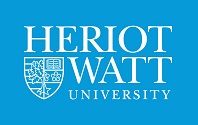 | Dr. David Johnson d.johnson@hw.ac.uk Dave is working in collaboration with Dr Ai-Lan Lee on understanding Au(I) catalytic processes of the direct allylic etherification of alcohols. His Ph.D. was supervised by Dr John Slattery and Dr Jason Lynam. One of the primary focuses of his research was the mechanism of pyridine C-H activation and subsequent alkenylation with a half-sandwich Rh(II) centre.3 Other studies involved a Ru(II) bis-acetate complex in alkyne / vinylidene tautomerisation, which led onto further catalytic studies with similar systems.1 Lastly, a selection of ligands were investigated with a combination of DFT/NBO methods in order to predict how their bonding topology related to their donating ability.2 | |
Back to Group |
Recent Publications |
[9]. | Structure of Amido Pyridinium Betaines: Persistent Intermolecular C-H···N Hydrogen Bonding in Solution |
[8]. | Gold-Catalyzed Proto- and Deuterodeboronation. |
[7]. | Chirality Transfer in Gold(I)-Catalysed Direct Allylic Etherifications of Unactivated Alcohols: Experimental and Computational Study. |
[6]. | Gold(I)-Catalysed Direct Thioetherifications Using Allylic Alcohols: an Experimental and Computational Study. |
[5]. | Palladium-Catalyzed Direct C-H Functionalization of Benzoquinone. |
[4]. | Mapping the Elimination of Water from Hydroxyvinylidene Complexes of Ruthenium(II): Access to Allenylidene and Vinylvinylidene Complexes in a Stepwise Fashion. |
[3]. | Ruthenium-Mediated C-H Functionalization of Pyridine: The Role of Vinylidene and Pyridylidene Ligands. |
[2]. | Charged Behaviour from Neutral Ligands: Synthesis and Properties of N-Heterocyclic Pseudo-amides. |
[1]. | Insights into the intramolecular acetate-mediated formation of ruthenium vinylidene complexes: a ligand-assisted proton shuttle (LAPS) mechanism. |
News |
22nd Feburary 2016 |
1st December 2015 |
10th October 2015 |
3rd June 2015 |
1st April 2015 |
Heriot-Watt University, Institute of Chemical Sciences, Edinburgh, Scotland, UK EH14 4AS
